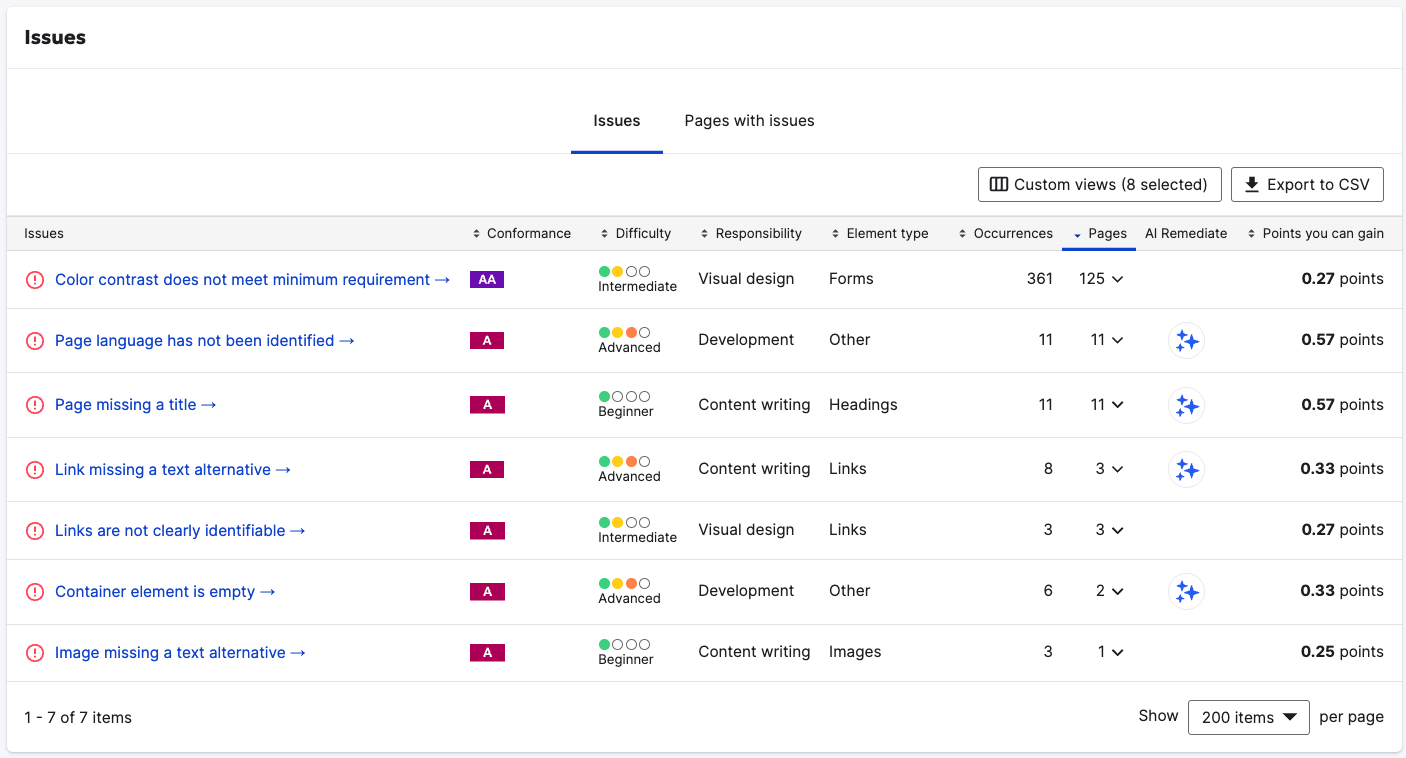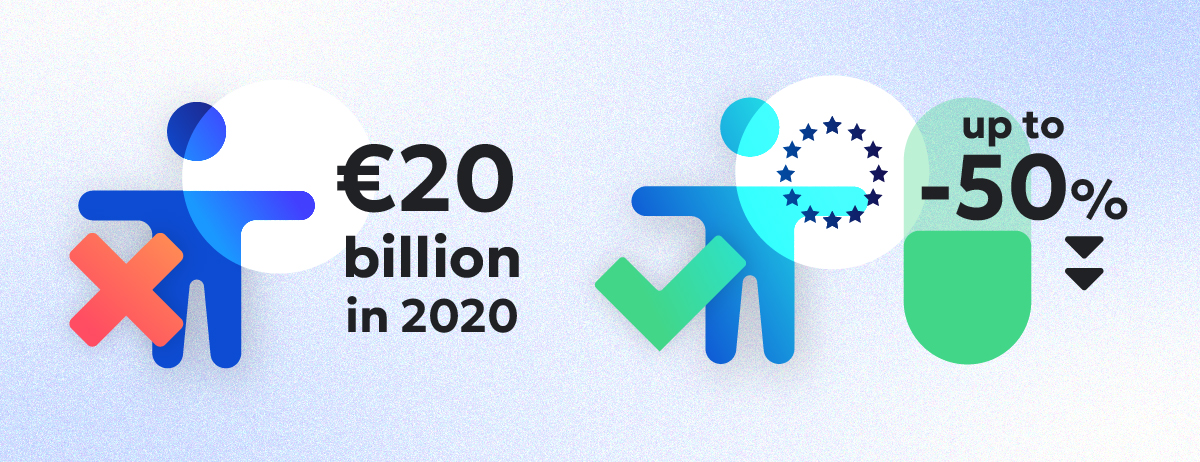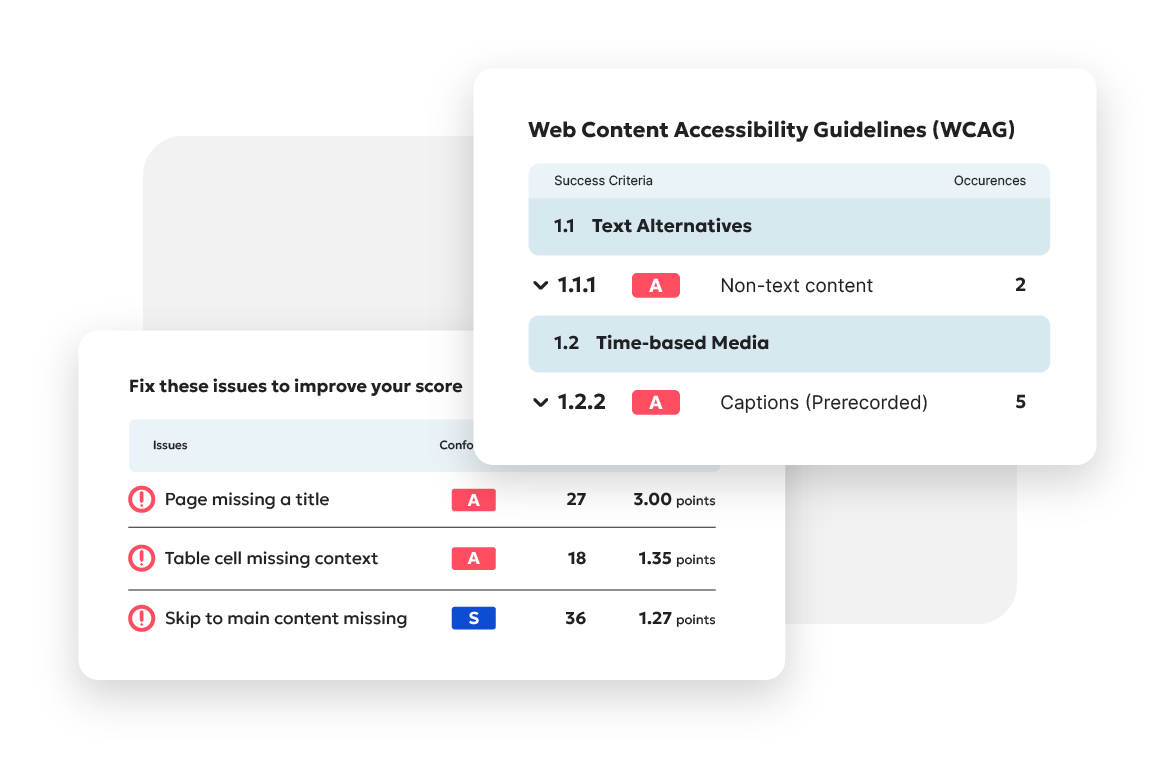By now, you're likely acquainted with the European Accessibility Act (EAA) , which was first adopted in 2019. Organizations throughout Europe have worked diligently to adopt its provisions.
As of June 28, 2025, this law went into effect, marking a significant shift toward standardized accessibility across the EU, with both businesses and consumers affected. Failing to comply could result in penalties and diminish market reach; it could also erode your brand reputation and consumer trust.
There's no better time than now to ensure you thoroughly understand the EAA requirements for your business. That way, you’re fully prepared to make whatever adjustments you need to make quickly.
What is the European Accessibility Act?
The European Accessibility Act (EAA), also known as Directive 2019/882, is legislation created by the European Parliament and aims to enhance the internal market for accessible products and services by eliminating barriers resulting from varying rules across EU member state s. Previously, each member state in the EU had different accessibility standards for products and services , which resulted in a poor selection and expensive products for consumers and small, fragmented markets.
Under the EAA, EU member states have a set of shared accessibility rules to follow, so it’s easier for private companies to sell compliant products and services in all areas of the EU, which will increase selection for consumers.
Under the EAA, EU member states must adhere to common accessibility regulations, which facilitates easier access for companies to sell compliant products and services across the EU. This harmonization and standardization of accessibility rules expands consumer choices, encourages market growth and innovation, and reduces market fragmentation and enhances product availability.
The EAA emphasizes a "design for all" approach to align with the UN Convention on the Rights of Persons with Disabilities , which advocates for products and services usable by everyone without the need for specialized design. Moreover, it stipulates that apps and websites should adhere to the principles of accessibility (POUR): perceivable , operable , understandable , and robust , in alignment wit h WCAG standards to ensure digital content is accessible to all users.
An estimated 135 million individuals in the EU have disabilities , so the EAA plays a pivotal role in upholding their rights and ensuring equal access to products and services. Alongside the EU Web Accessibility Directive, which sets standards for online content accessibility across the EU, the EAA underscores the EU's commitment to fostering inclusivity and accessibility for all .
The European Disability Forum advocates for the EAA, a powerful indicator of how important it is to address the needs and rights of individuals with disabilities.
The web must be clear. Laws demand it. Siteimprove finds the problems on your pages, and it helps you fix them so you stay right.

Ready to Master EAA Compliance? Access everything you need to understand and meet the European Accessibility Act requirements in one place. Explore the EAA Resource Center now and build a truly accessible website.
What are the benefits of the EAA?
For companies and member states
In the past, companies typically designed products or services to meet the accessibility standards of only one or a few countries. This limited approach reduced competitiveness in product/service selection and diminished companies' motivation to develop accessible offerings.
The EU Commission has estimated that differing accessibility requirements cost companies and member states €20 billion in 2020. The proposed EU action was estimated to reduce that by 45 to 50 percent. Indeed, the EU estimates that harmonizing accessibility standards could save companies and member states up to €10 billion annually.

With a standard set of accessibility rules, companies can offer products and services that are compliant within the whole of Europe, which greatly increases their market reach and incentive to create accessible offerings. (For B2B companies, figuring out what does and doesn’t fall under EAA can be tricky, so it’s best to read more about what EAA really means for B2B .)
Each EU member state is responsible for enforcing the EAA and setting penalties for noncompliance, and for ensuring local adherence to the directive.
For consumers
The European Accessibility Act promises numerous advantages for consumers and individuals with disabilities alike. With a wider array of choices, products and services will not only improve but also become more competitively priced. Moreover, enhanced accessibility fosters greater independence for individuals with disabilities, enabling them to rely on a broader range of accessible offerings.
Additional benefits of the act include:
- Increased employment opportunities for individuals with disabilities in the creation of accessible products and services
- Harmonized accessibility requirements facilitate the sharing of research, technology, and ideas among companies, benefiting everyone
- The EU's stringent accessibility standards influence other countries to adopt similar measures to access the lucrative EU market easily
- Standardized accessibility levels across member states promotes greater freedom of movement and employment opportunities for individuals with disabilities
- The elderly, individuals with temporary disabilities, and travelers also enjoy improved access to services and devices
- A unified market for accessible products and services leads to lower prices, greater choices, and increased innovation
What's the timeline for the EAA?
The EAA was adopted by the EU in June 2019, and by June 2022, EU member states were required to translate and adopt the directive into their national laws. Enforcement began June 28, 2025. Check your site against EAA requirements now.
How is the European Accessibility Act enforced?
Each member state is responsible for enforcement, which means they can appoint the body in charge of enforcement and decide penalties.
Penalties
Member states also oversee their own penalties for noncompliance, which should be “effective, proportionate, and dissuasive.”
Reporting noncompliance
Each member state must make it possible for consumers to report noncompliance to either the courts or the body in charge of enforcing the law in that country.
Both public and private organizations also must have the option of going to court or filing a complaint with the body in charge.
How do I know if the EAA applies to my business?
Most businesses based in or offering services to European consumers are required to be EAA compliant. There is an exception in the act for “undue burden,” meaning a company doesn’t have to comply if it would change the nature of the product/service or if the company would be financially overburdened.
There’s also an exception for what the act calls “micro-enterprises,” which are companies with less than 10 employees and an annual balance sheet total not exceeding Є2 million.
There are a few specific instances that are exempt from compliance:
- Pre-recorded time-based media (e.g., videos) published before June 2025
- Office file formats published before June 2025
- Online maps, if essential information is otherwise provided in an accessible way
- Third-party content that is not funded, developed, or under the control of an organization that must be compliant
- Archived content that won’t be updated after June 2025
How can I make sure I’m EAA compliant?
You can’t go wrong by starting with a general “Design for All” approach that ensures that your digital presence (and products) are usable by everyone.
To comply with EAA, businesses should implement various accessibility features, such as text-to-speech, keyboard navigation, and screen reader compatibility. ( Mobile apps should also be accessible, including adherence to POUR principles and compatibility with assistive technologies.)
The Siteimprove EAA Checklist can help guide you through some of the most common digital accessibility issues, from insufficient color contrasts to CAPTCHA systems. It’s comprehensive and can help you to understand the specific requirements that are applicable to your industry.
You can also tap accessibility training resources ranging from entire online courses to videos to events.
Have questions about how to remediate these issues, or how to best plan for full compliance? Our team is always happy to help.

Ready to create more accessible and inclusive web content?
Siteimprove Accessibility can help you create an inclusive digital presence for all.
Request a demo

